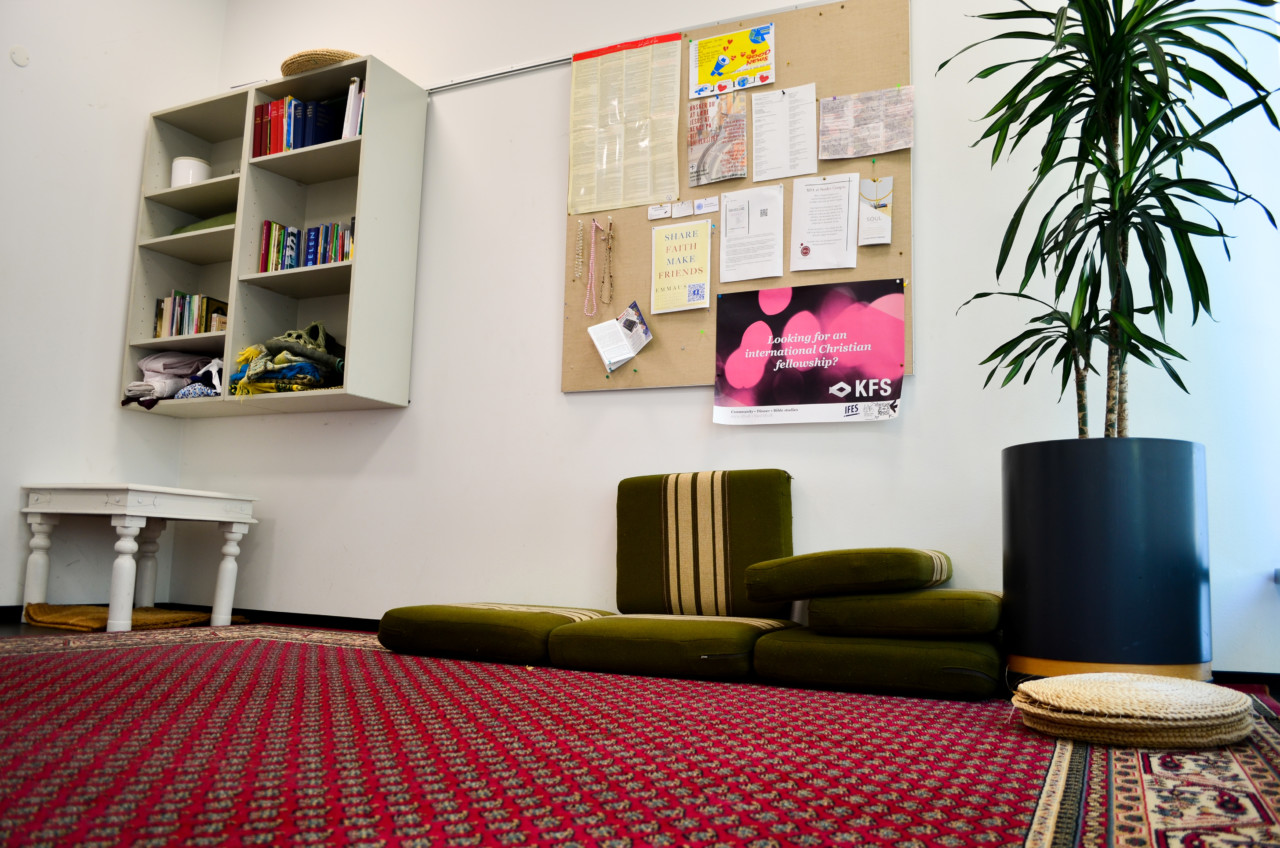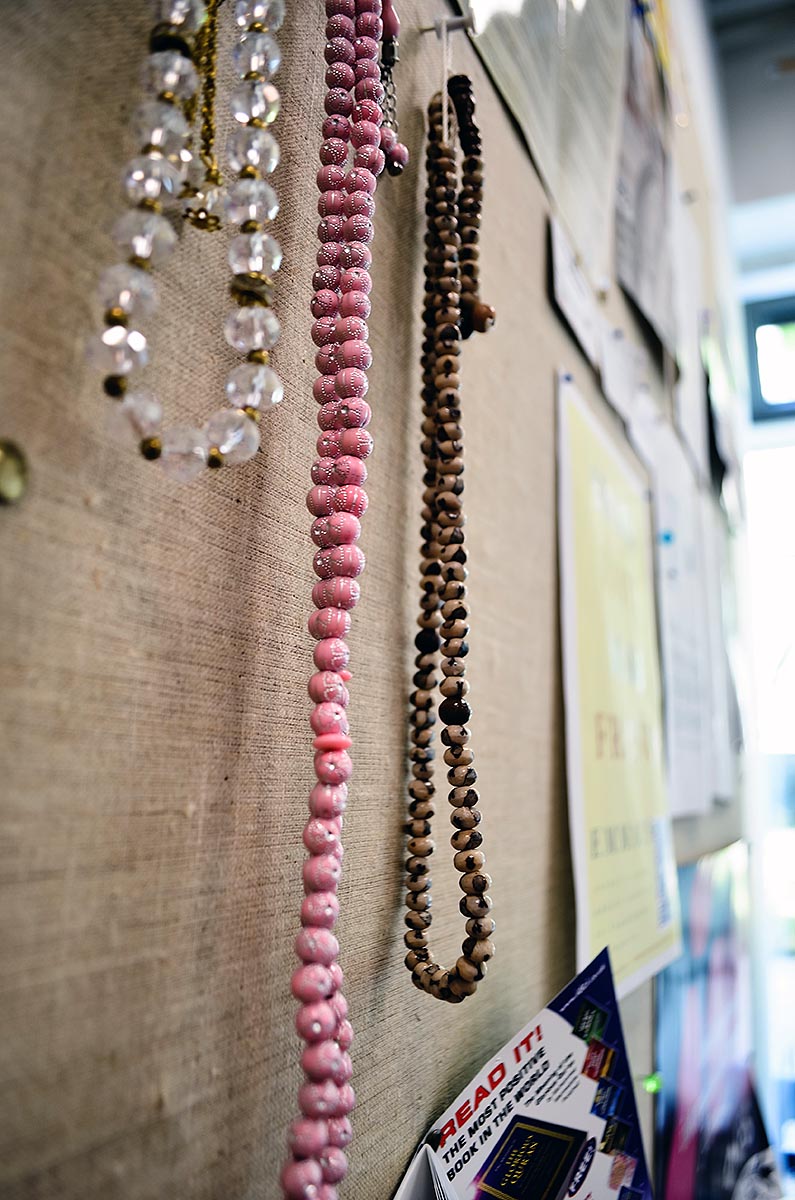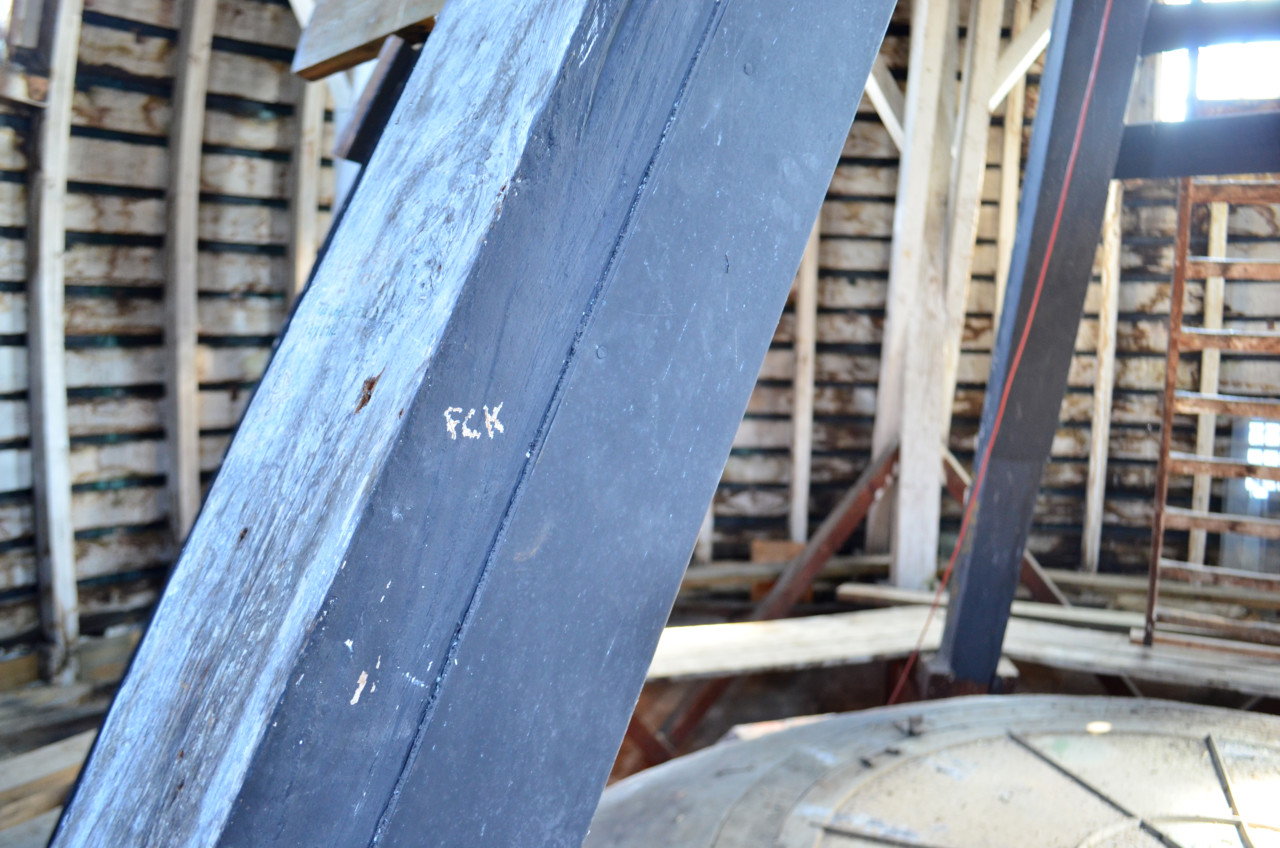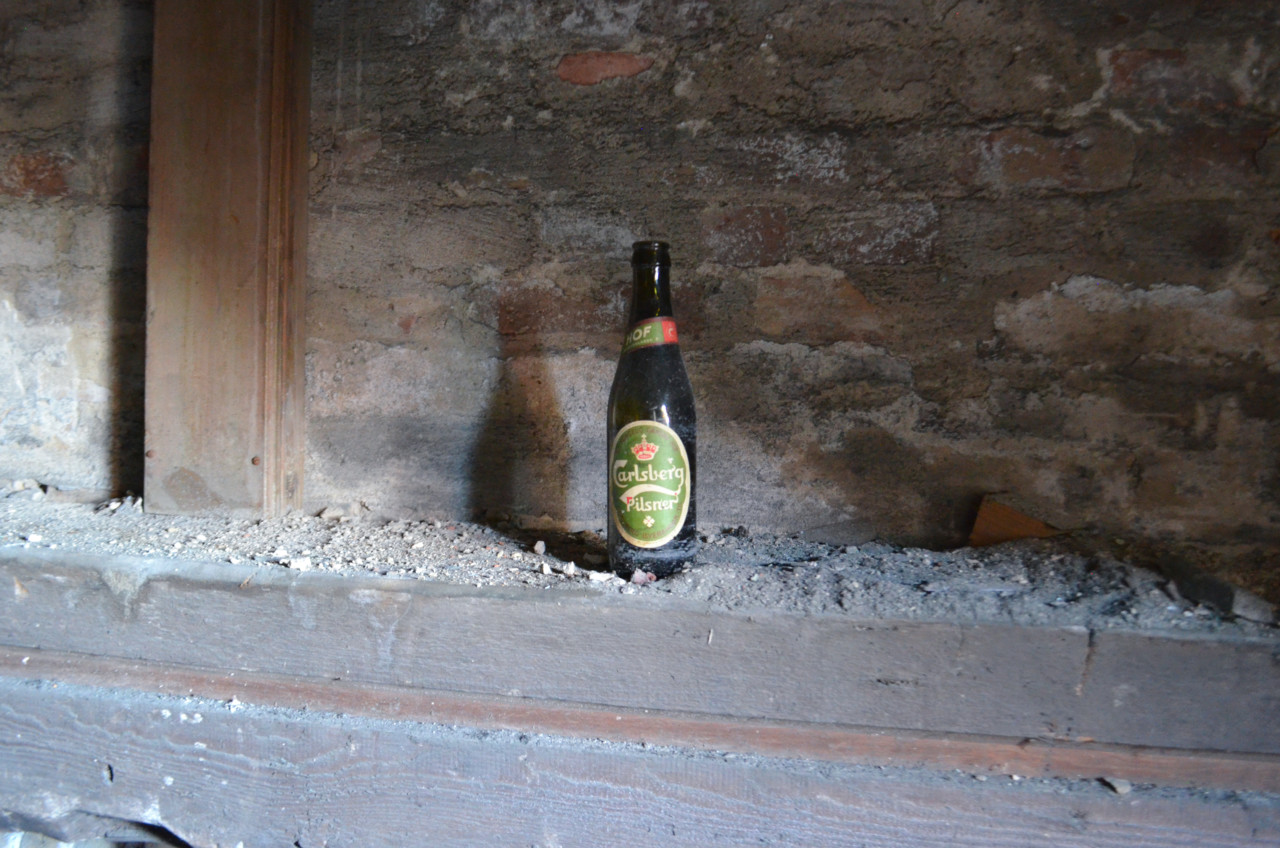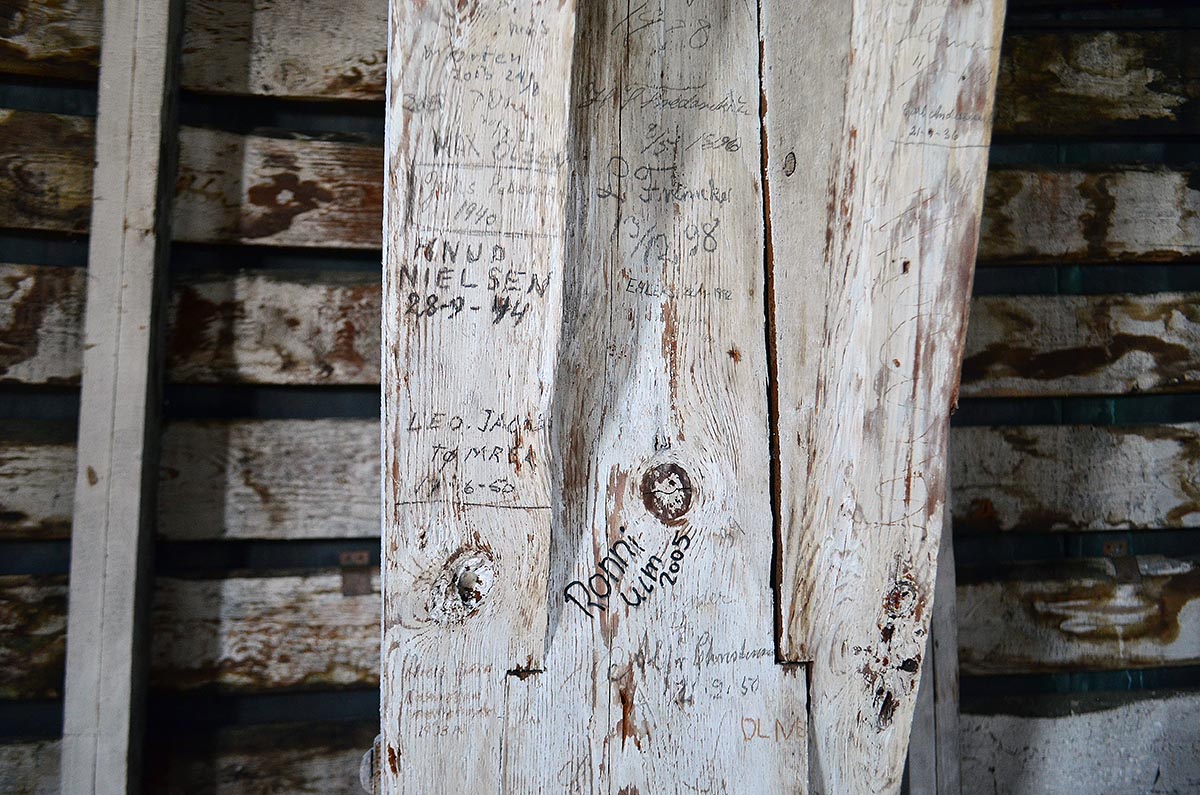Universitetsavisen
Nørregade 10
1165 København K
Tlf: 35 32 28 98 (mon-thurs)
E-mail: uni-avis@adm.ku.dk
—
Campus
Treasure hunt — An underground list of surprising localities at a centuries-old university.
We already have a mundane guide to the University of Copenhagen’s four campuses, so here is a more idiosyncratic one: it lists some of the hidden treasures that the 541-year-old university also contains.
We will start our bike ride at South Campus, which has been home to both law, theology and humanities students since 2017.
Perhaps you have heard that Faculty of Humanities is a hotbed of identity politics. We are not going to get into that here, but simply refer to a toilet for the disabled on the 2nd floor of building 14. Here, the toilet graffiti has escalated to cancel culture levels, because a vegan toilet user with the initials V.V. has produced a complete news wall raging against the meat eaters. Whatever side you are on in this debate, you cannot not let yourself be entertained, or shamed, by the deeply felt condemnation and the sarcastic comments that are added on to it on an ongoing basis.
The Saxo Institute’s room 12.4.61 in KUA 2 contains the ceramics lab, which is used to demonstrate lithic reduction (the fashioning of rocks from their natural state), and which also houses early discoveries, such as tiles, antlers and slices of wood from several continents. This photogenic laboratory is locked up, however, so you have to be good friends with an archaeology student to come in and play there.
Set course for KUA 2 (if you are confused, ask a passer-by, they are always really nice) and go up to the third floor in building 16. At the Department of Arts and Cultural Studies you will find a corridor with music practice rooms (from 16.3.63 to 16.3.78) with photo collages on the walls.
Most of the stuff on the walls at South Campus is kept tightly on message, with student-related content referred to in the bulletin boards. But at the Department of Musicology, students have been allowed to make a noise with their collages of pictures from the annual music competition MiGP.
Among the lovely costumes, brass horns and glitter, you can also – if you’re looking really good – find Danish actress, singer and songwriter Trine Dyrholm with crepe hair and blue eyeshadow. She was an honorary guest at the 2001 competition.
Finish off with a break in room 24.0.29 in KUA 1. Here you will find yourself among the prayer carpets and rosaries in one of the university’s retreat rooms. The room is »for silence, prayer and meditation« and was set up for cross-religious pursuits. To be used with respect, it goes without saying.
Goodbye to South Campus Now go via Amager Fælledvej, Christianshavn and across the Inderhavnsbroen bridge. Find the Arctic House on the canals on Strandgade and visit Greenland and Arctic studies, a small section of the Department of Cross-Cultural and Regional Studies.
Next stop: Arktisk Hus, Strandgade 102.
It is an old timber-framed building with white-painted beams in the classrooms. A student once hit his head so hard on one of the beams that he got a concussion. Associate Professor Frank Sejersen does not want to witness this again, so he has hung paraphernalia like sealskin boots and whale teeth up on the beams.
The walls are covered with everything from Italian Eskimo ice cream ads, to harpoons, to a gray whale baleen tooth set, which was transported home by a student from a study trip in Chukotka in Siberia (almost) without breaking. Now it divides the classrooms on the third floor with grammar boards and a Greenlandic snow chisel.
Next stop: Geological Museum, Øster Voldgade 5-7
Drive to Kongens Nytorv, right onto Borgergade and then left, onto Sølvgade. When you are in the intersection, you can see the National Gallery of Denmark on your right hand side and a lot of construction chaos on your left, turn to the left and there it is: The Geological Museum.
Walk towards the main entrance and get caught up in colours and impressions from the time Danish artist Per Kirkeby ran amok in here in 2004. The wall and ceiling frescos are inspired by the artist’s geology-field notes, which he had from his 1950s studies and portray a number of primordial continents.
You can enjoy the overwhelming blast of the colours without buying a ticket, but maybe you would like to see the museum’s dull black killer, a T-Rex named Tristan Otto, as you are already here. In any case, the University Post critic fell for it, even though she hates fossils.
Next stop: CSS, Gammeltoftsgade 15
The municipal hospital is right next to the Geological Museum. If you have lost your way, you can ask the staff or a family with kids who are on dino-sightseeing.
Few places contain more surprises than the old municipal hospital, home to the Faculty of Social Sciences campus. Casper Overgaard is chief operating officer for the entire heritage-protected glory of it all, and he will give a guided tour if you ask nicely.
Start with a walk in the courtyard and note that the grass that your fellow students are slouching around on with their books, actually covers Cold War-era bunkers. After the Cuba crisis, the city set up six underground operating theatres behind heavy lead doors in what was called the atomic basement. The public does not have access, but you can find small hints of the basement’s existence – like on the elevator next to Building 4, where the bottom button is called ‘A’ (for atomic shelter, get it?).
If you walk into building 4 and go down the pale corridors, you can find an empty pool decorated with withered festive flags between building 4 and 13. It used to be for the rehabilitation of hospital patients, and later – pre-corona that is – students partied here, and different rumours have it that the pool has been used as a plastic ball pit … and full of vomit.
Via a locked door and a few steps in building 5, you get up to the ceiling which connects the entire main building. Fabric-wrapped pipes with inscriptions like »X-ray Room 1« and »Anaesthetic part 2« gather dust up here. The large, empty rooms have a sweet-smelling odour, because body parts were stored here in formalin so that medical students could test their surgical skills on them.
This is where the operating officer locks us through a handful of doors, and – Hallelujah! – we are in a chapel. Unfortunately, the finely decorated space (with a sea full of artichokes) has only been open to the public during the city’s open night culture festival, otherwise it is deserted.
‘Via small, anxiety-inducing wooden ladders we are now in the interior of the university church’s dome. Here there are still traces of the craftsmen, and other daredevils, who made their mark on the beams. With some inscriptions dating back to the 19th century, and others more recent, if FCK is to be interpreted as the Copenhagen football club which was founded in 1992.
Next stop: Botanical Gardens, Gothersgade 128
Drive up Øster Voldgade towards Nørreport and stop when you hit Gothersgade. On your right hand is the main entrance to the Botanical Gardens.
A personal favourite is the Amorphophallus titanum, which has its natural habitat in Indonesia’s rainforests and is known for its diva-like attitude. It is full of contrasts with its smooth, pleated and violet leaves that surround an erect, coarse and bright green inflorescence.
In nature, it only blooms every 15 years, but in the palm house it happens every second year, and when it unfolds, it smells like rotting meat in the pretty greenhouse. The last time was in June 2020, so you have to be a bit patient.
Next stop: University quadrangle (quarter), Nørregade 10
Continue along Øster Voldgade past Nørreport and turn down Nørregade. Continue on until you reach Frue Plads on your left, where the rector and the central administration amuse themselves in the beautiful old buildings. Slip through the first wooden gate and surround yourself with the buildings that make up the university quarter or quadrangle.
Until 1770, the university had its own jurisdiction. The university management, its senate, acted as a court of justice for the students who came into conflict with the authorities, and right up until 1712, the worst violations were sanctioned with a trip to the university’s dungeon and a diet of bread and water. According to the protocols, disorder in combination with drunkenness or excessive maltreatment of freshmen entailed a sojourn in the dungeon.
READ ALSO: The spirit of the bottle – the history of Friday bars
The university’s quadrangle is cram packed with history. On the other side of the fine grey Professor Villa is the museum building, which housed the university’s zoological collection until it grew too large. There are still relics, however, from the time when skeletons from whales, vertebrates, and arthropods could be seen in the display cabinets behind the heavy walls.
Next stop: Frederiksberg Campus, Bülowsvej 17
Don’t worry, now you’re halfway through the bike ride. If you are thirsty, drop by the University Post on Store Kannikestræde 18 for a drink and a chat about how things are doing for you. Otherwise, you can google map your way to the old Royal Veterinary and Agricultural University, which has now been swallowed up by the Faculty of Science.
Walk through the courtyard and into the long side-building with high ceiling and get blown away by the octagonal main lecture hall (Auditorium 1-01.01), where there are dizzying high ceilings, ochre yellow walls and illustrations of animal and cereal varieties.
READ ALSO: My favourite spot on campus
Now go back towards Thorvaldsensvej and to the left, and then, after a few hundred metres, to the right down the Den Grønne Sti/Nørrebro route. Just before you hit Åbuen, keep on the left where you will find…
How about a garden walk among the spring goslings and opium poppies?
The student gardens belong to Frederiksberg Campus and are run by students with ‘green fingers’. The concept of wild gardening prevails, and the plant beds are untrimmed. If you are lucky, you can meet a garden expert out here, who can tell you what herb you need to put in your tea if your neck is sore and your nose is runny. Otherwise, it’s okay just to stroll there with new friends or even your tinder date.
Next stop: The Panum Institute
Continue now over the Åbuen and further along Den Grønne Sti/Nørrebro route. Turn off to the right at Rantzausgade and then left along Jesper Brochmands Gade, and it will take you through to the Assistens Cemetery. Turn right on Nørrebrogade (you are almost there!) and then left on to Fælledvej/Blegdamsvej. Stop by the University’s showy and award-winning landmark, the Maersk Tower.
SIGN UP FOR THE UNIVERSITY POST NEWSLETTER HERE
The Panum Institute is the place where doctors and dentists are educated. At this address there is (perhaps) the university’s most hush-hush location, the shaft. The rumour has it ithat it is adjacent to the student club Studenterklubben, which is Panum’s Friday bar.
Unfortunately, it is so secret that the University Post has not been able to gain access, even though we have sent our most charming reporter. It is said that on special occasions the chosen few may be allowed inside the shaft if they leave either the lower half or the upper half of their clothing outside. Does this sound a bit like last year? We still don’t know.
The shaft is closed off. But we do recommend that you take the trip up to the 15th floor with the elevator to the left of the main entrance in the Maersk Tower. Up here the view over the city is amazing and great for Instagram. xxx Use the hashtag #ucphlife on Insta so that all your friends can see how well-integrated you already are into university life.
Next (and last!) stop: Universitetsparken – Nørre Allé 59
Go towards Tagensvej. Turn left and continue until you meet Nørre Allé and then take a right turn. Continue until you meet yellow brick buildings with small red balconies and awnings. Welcome to the natural science departments of the Universitetsparken. You can probably only find your way if you have a buddy who knows their way around, as many of the signs are heritage-protected (like the rest of the building) and therefore outdated and misleading.
If you go in via the H.C. Ørsted building’s entrance and continue diagonally across the park, you will (hopefully) end up at the local Friday bar ‘Caféen?’ Yes, that’s what it’s called. Questioning itself. The address is Universitetsparken 15, building 4, if you are lost. The bar is a tiny black box wrapped in corrugated walls, and simply called ‘home’ by the clientele.
Where the humanities students have a vegan toilet, the natural sciences have a porn toilet. You can choose whether you want to take a pee or powder your nose in the men’s, women’s … or porn toilet, where you can enjoy the company of pointed nipples and Kamasutra-like stickers on the wall. It is all enlightened by a disco ball. The sleaziness lives on in the bar, which also parades a couple of leather cords and lace panties hanging in the light racks. Yes sir.
Two parts vodka, 1 part light rum, 1 part gin, 2 parts Pisang Ambon, 1 part sprite and a drop of Rose’s lime. This may sound like the recipe for blackouts and bad decisions, but it is also the recipe for the Caféen?’s cocktail of the house, the Little Physicist. If you are a daredevil, you can upgrade to a Drop Stone Dead that is double-up on the alcohol. That is, when and if the Friday bars open again.
Good luck with it.
